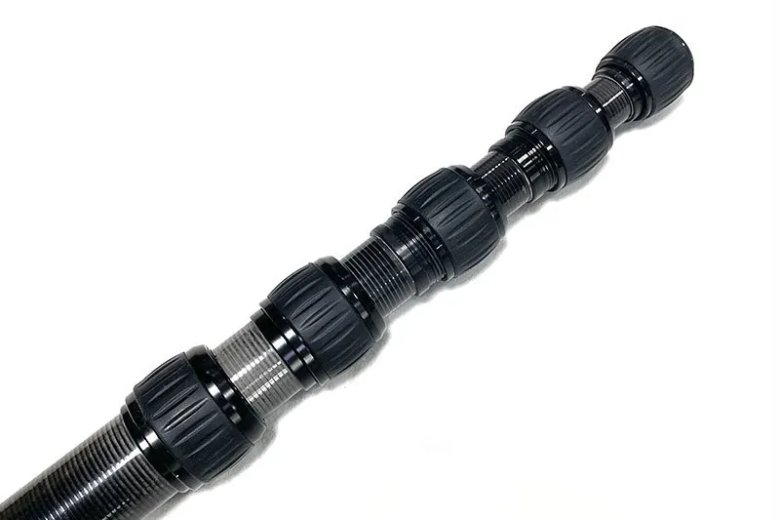
Lad os se nærmere på Teleskoprør af kulfiber. Er de bare dyrt bling, eller er de et reelt fremskridt for din stjernekiggeri? Mange astronomer stiller netop dette spørgsmål. Du ser det slanke sorte rør, der lover en fantastisk udsigt. Alligevel føles din tegnebog betydeligt lettere bare ved at tænke på det. Så hvad sker der?
Lad os først undersøge præstationsvinklen. Kulfiber har en utrolig lav varmeudvidelse. Det betyder, at temperaturfald i løbet af lange nætter ikke bør ændre dit fokus drastisk. Derfor elsker astrofotografer ofte kulfiberteleskoprør, fordi de holder stjernerne skarpe i timevis. Desuden har disse rør en betydelig stivhed. Tænk på materialer, der er stærke nok til et kulfiberraketrør; den samme stivhed hjælper med at opretholde den optiske justering ganske godt. Desuden vejer de generelt mindre end deres modstykker i metal. Mindre vægt gør helt sikkert opsætningen nemmere. Det giver også mulighed for at bruge et større kikkertsigte på din eksisterende montering, hvilket lyder ret godt.
Men vi er nødt til at forholde os til perspektivet "dyr hype". Kulfiber-teleskoprør koster ofte meget mere end aluminium eller stål. Betyder den termiske stabilitet virkelig noget for visuelle observatører, der nyder tilfældige blikke? Måske ikke altid. Metalrør fungerer ofte helt fint, især med lidt akklimatiseringstid. Derudover bekymrer nogle brugere sig om kulfiberens holdbarhed. Selv om det er stærkt, kan det være skørt under skarpe stød. Derfor investerer nogle ejere i kulfiberrørbeskyttere for ekstra sikkerhed under transport. Sourcing spiller også en rolle; du kan måske finde en leverandør af kulfiberrør i Kina, der tilbyder lavere priser, men kvalitetskonsistens kræver omhyggelig kontrol.
Så hvordan beslutter du dig? Overvej din vigtigste brugssituation. Billeddannelse af den dybe himmel har stor gavn af et stabilt fokus, hvilket gør kulfiberteleskoprør ret attraktive. Ligeledes, hvis du presser monteringens kapacitetsgrænser, hjælper det betydeligt at spare vægt.
Bygger du måske en specialkikkert? Du kan købe specifikke størrelser, måske et 10 mm kulfiberrør til et søgerbeslag eller et robust 25 mm kulfiberrør til rammen. Måske passer et kulfiberrør med en diameter på 1 tomme endda til dit projekt.
Nogle bærbare kikkerter bruger et teleskopisk kulfiberrørdesign, der udnytter både lethed og kompakthed, selvom disse giver unikke mekaniske overvejelser. Mindre diametre som et 6 mm kulfiberrør eller 8 mm kulfiberrør bruges også i specialiserede dele. Sammenlign dette med visuel observation, hvor et godt fremstillet aluminiumsrør ofte giver fantastiske resultater uden at sprænge din bank. Du har sandsynligvis ikke brug for de materialeegenskaber, der kræves til kulfiberraketrør, bare for at se på Jupiter. Selv den luksusfølelse, der nogle gange ses i ting som et cigarrør i kulfiber, giver ikke automatisk bedre astronomiske udsigter.
Teleskoprør af kulfiber giver i sidste ende ægte tekniske fordele. Deres lave varmeudvidelse og vægtbesparelser giver reelle løsninger på specifikke problemer, især inden for astrofotografering og med store instrumenter. Men de er ikke uundværlige for alle astronomer. Evaluer dit budget, din observationsstil og din tolerance for omkostninger i forhold til fordele. Nogle gange fungerer et godt gammelt metalrør glimrende. Derfor er valget mellem hype og spring helt op til dig, baseret på dine personlige behov og astronomiske mål, når du vælger kulfiberteleskoprør.
Referencer:
1. Sådan skærer du kulfiberrør: Nøglen til tolerance og kunderelationer
2.Bedste praksis for rengøring og vedligeholdelse af firkantede kulfiberrør
3.Kan kulfiberrør masseproduceres? Her er, hvad du har brug for at vide
4.Sådan forbedrer du overfladekvaliteten på kulfiberrør med stor diameter
5.Hvorfor er kulfiberrøret 50mm OD 47mm ID så populært?


Et svar